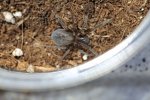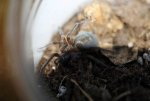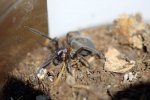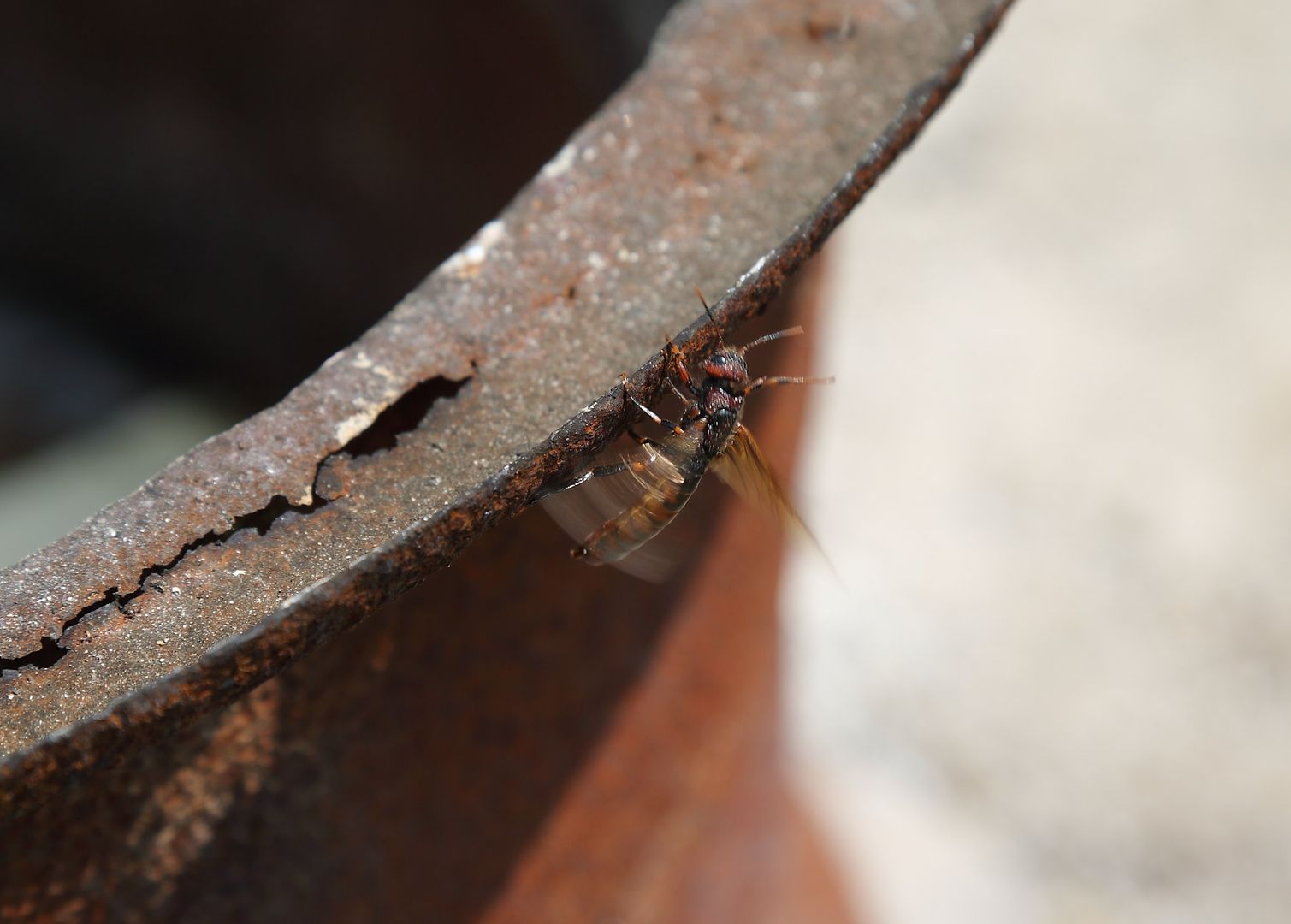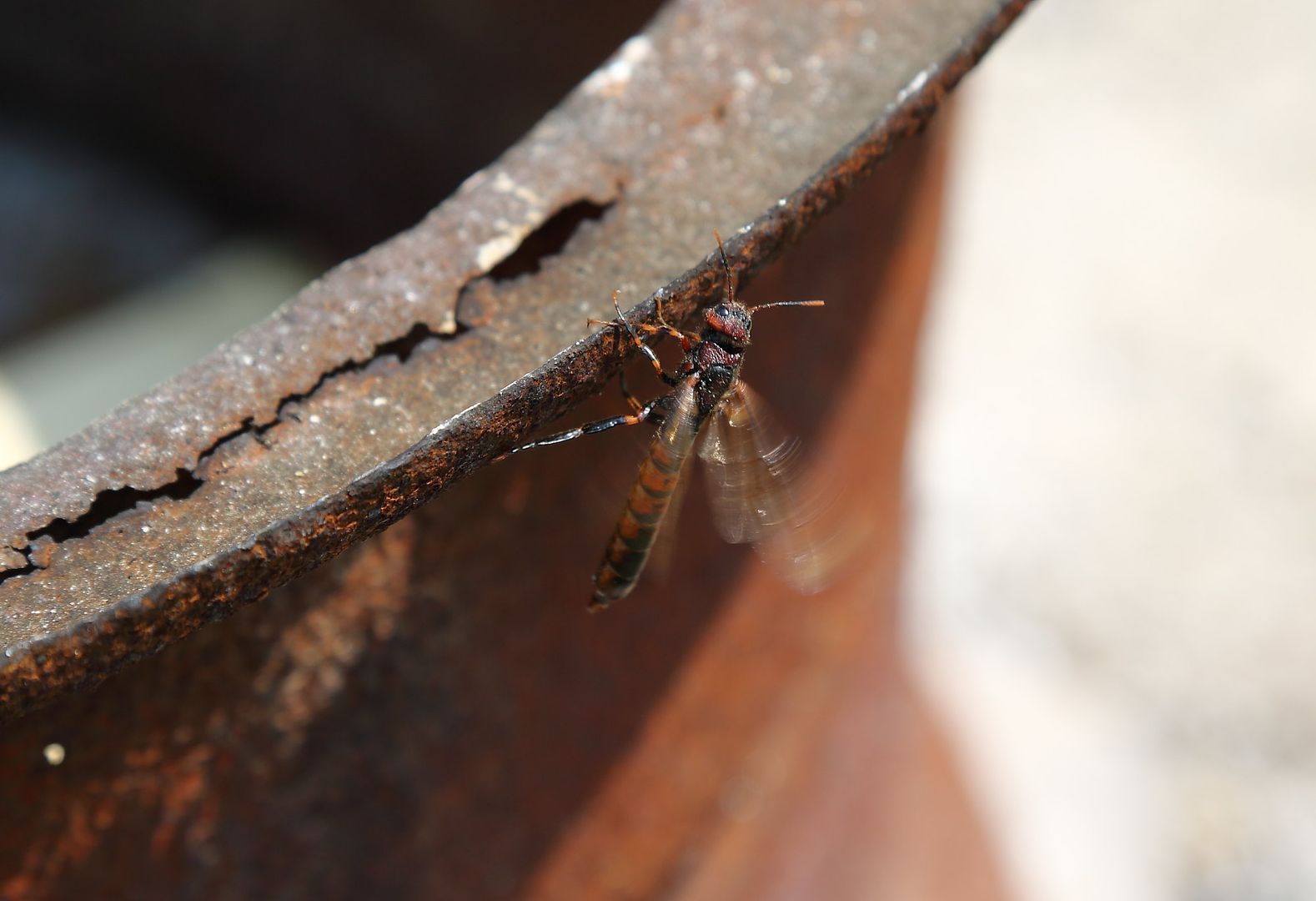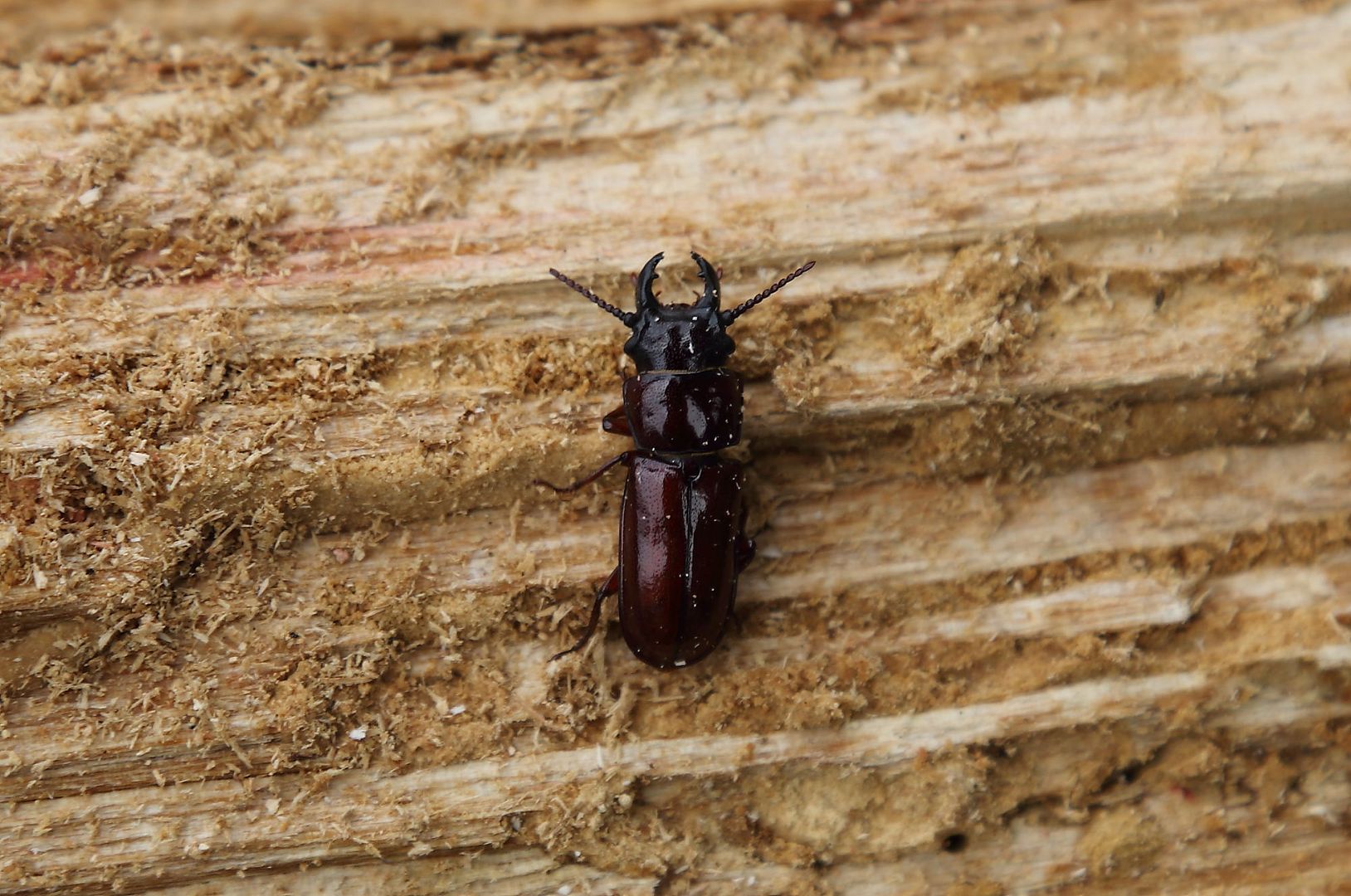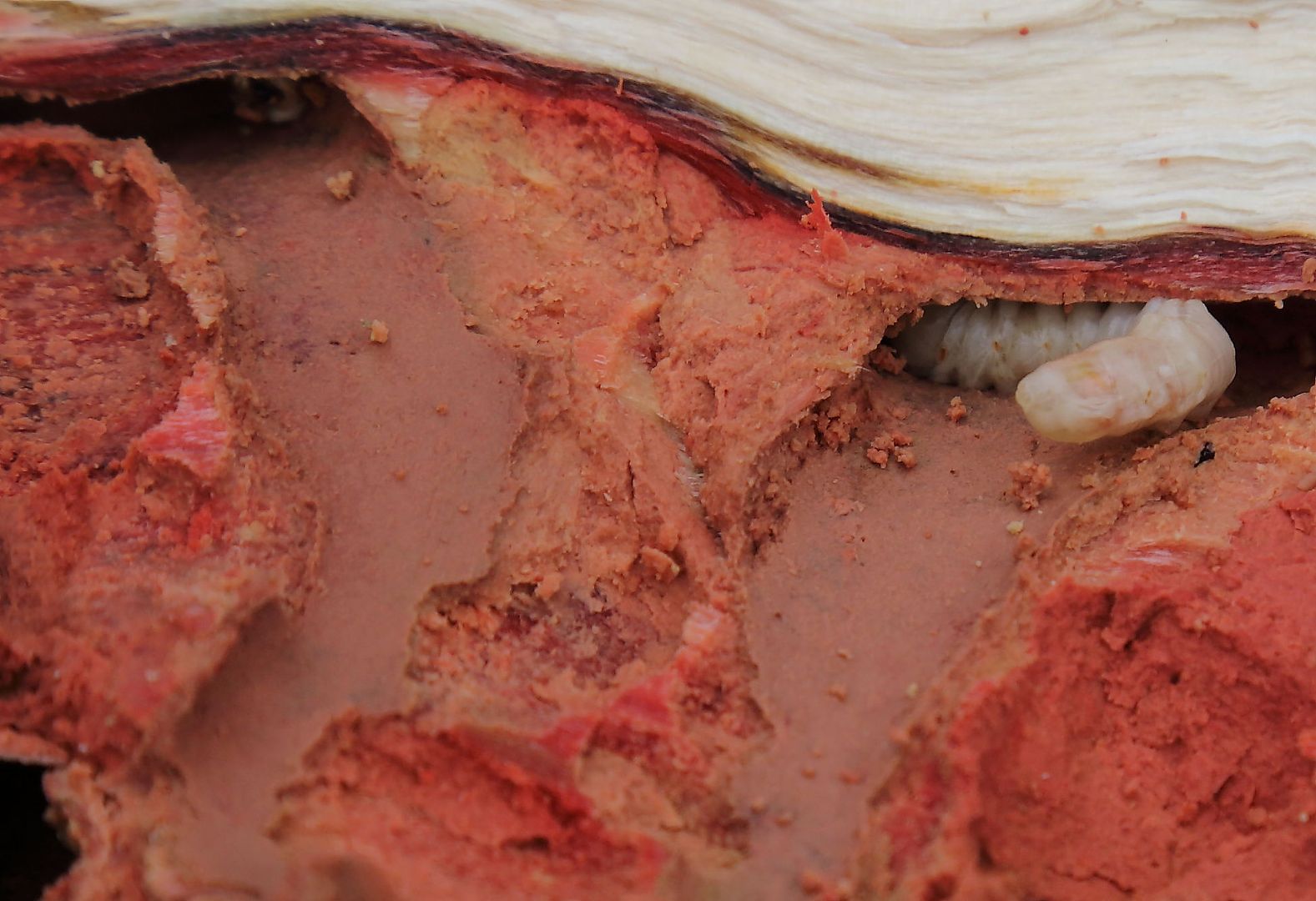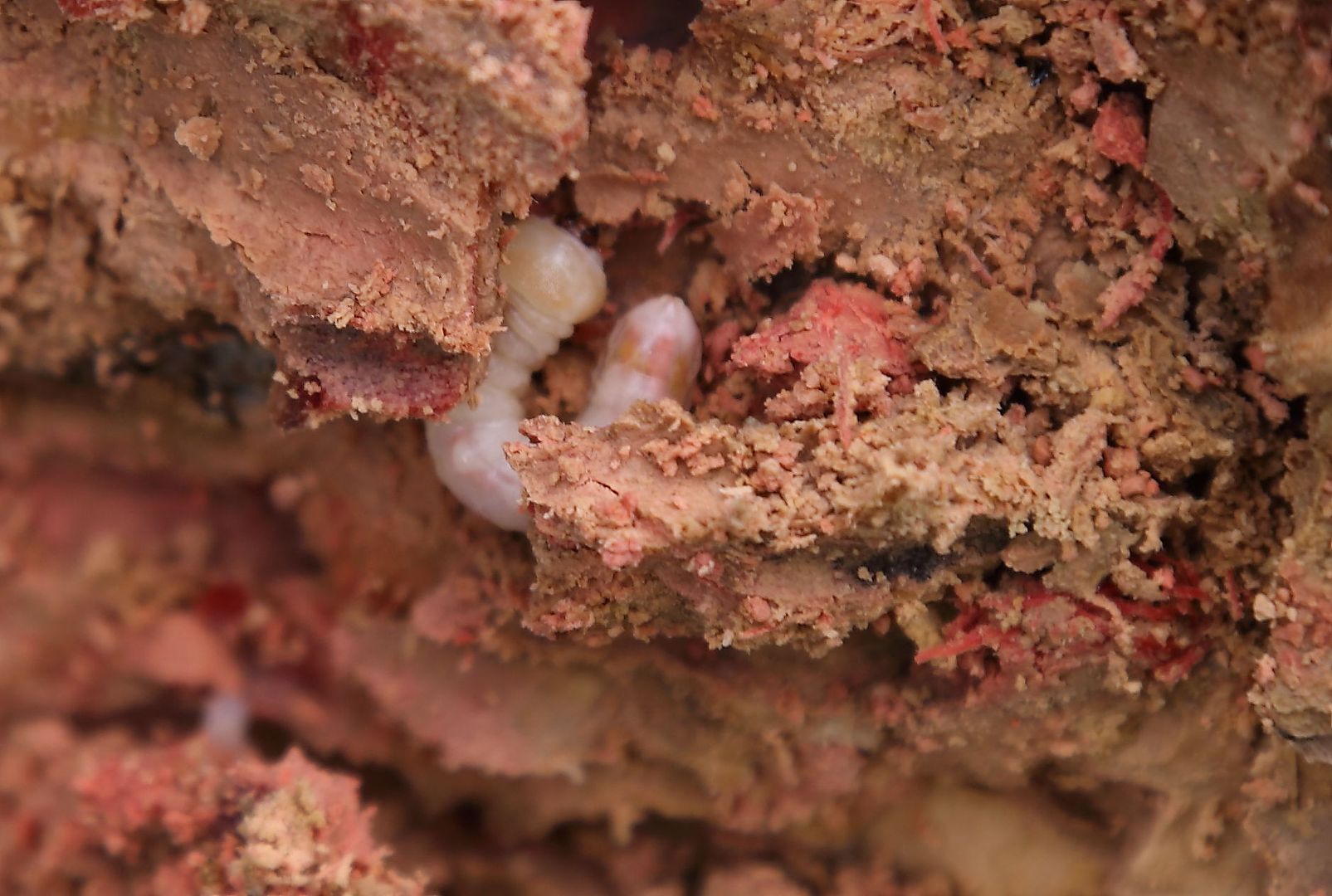More Beach Wildlife
- Thread starter scotto
- Start date
Has anyone seen any coyotes lately?
hubby works down by pier #8 & early one morning he was surrounded by 2 of them..apperently they had a den under the trailer & had a few babys under. hubby just frooze & waited for them to scurry away.
hubby works down by pier #8 & early one morning he was surrounded by 2 of them..apperently they had a den under the trailer & had a few babys under. hubby just frooze & waited for them to scurry away.
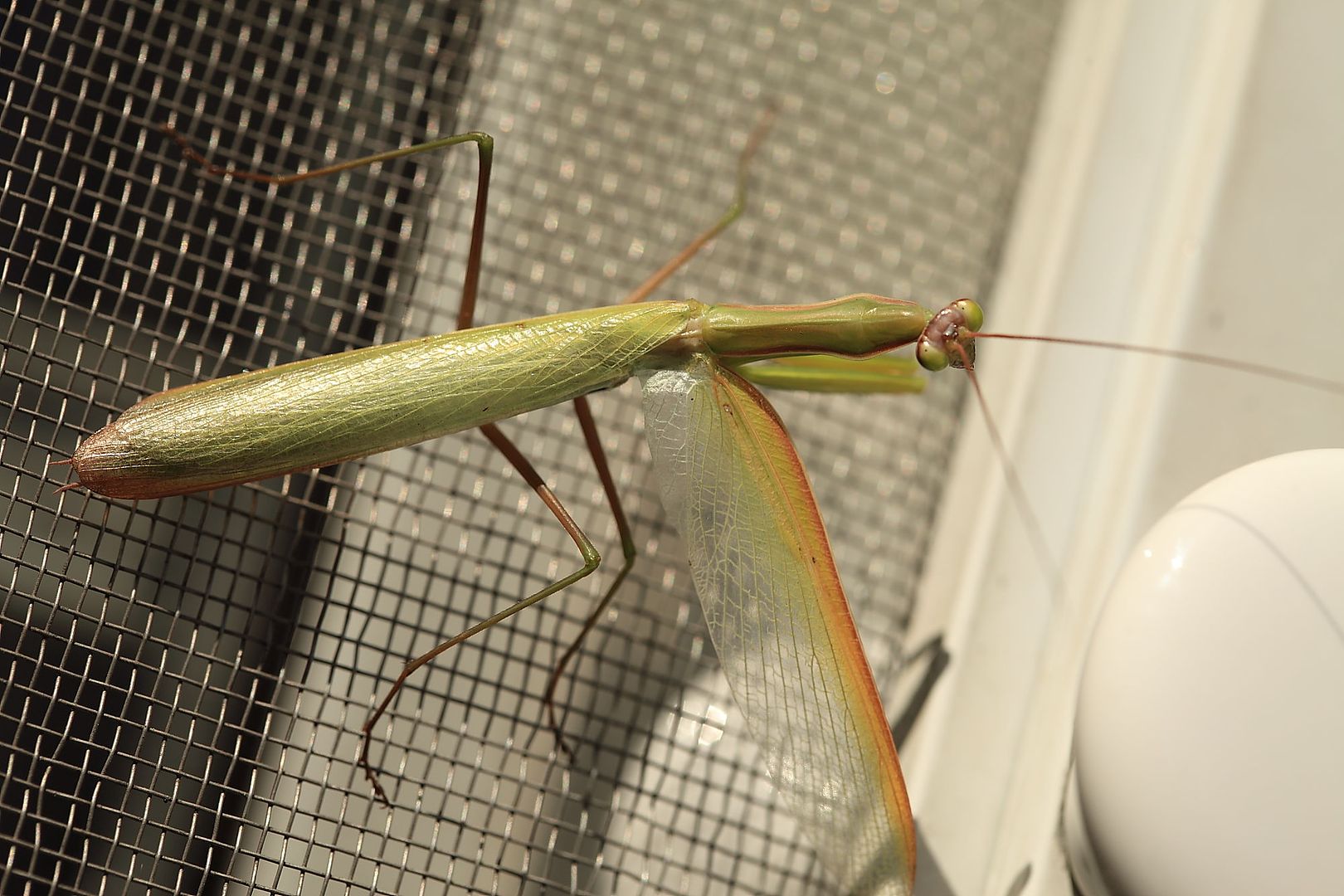
I am sure they are around, but I haven't seen any in while or heard of any problems. With the amount of rabbits we have on the beach, they would have plenty of food.
I sent a picture into the Ministry of Natural Resources as I was worried that it was a flying termite.
The insect in your photo is a species of horntail the scientific name of which is Tremex columba (commonly called the Pigeon Horntail). Horntails are a family of insects (Siricidae) in the insect order Hymenoptera (sawflies, bees, wasps and ants).
This species in native to North America and is found throughout the forested regions of Canada. Female horntails use their dagger-like ovipositor to insert their eggs, along with a symbiotic fungus into a dying or diseased tree. The individual in your photo is a male and so lacks the ovipositor. In the case of this species, they lay their eggs in dead or weakened limbs of a variety of deciduous trees (mostly hickories, maples and elms). The egg hatches into a larva and the larva feeds upon the fungus as well as the wood of the dead or dying limbs.
It is generally not considered a pest since attacks are limited to trees and limbs that are in serious decline or already dead (i.e. it does not kill trees but simply utilizes those that are dead or dying as a place for its larvae to live and grow).
It does not pose any threat to humans as the ovipositor is only for laying eggs and this insect does not sting.
It is fascinating insect with a very interesting relationship between it and the fungus.
More information on this species can be found here:
http://www.biology.ualberta.ca/bsc/ejournal/sgsbws_21/Siricidae/Species/Tremex/columba.html
And more information on the biology of horntails in general can be found here:
http://www.biology.ualberta.ca/bsc/ejournal/sgsbws_21/Siricidae/HTML/biology.html
All the very best,
Colin
The insect in your photo is a species of horntail the scientific name of which is Tremex columba (commonly called the Pigeon Horntail). Horntails are a family of insects (Siricidae) in the insect order Hymenoptera (sawflies, bees, wasps and ants).
This species in native to North America and is found throughout the forested regions of Canada. Female horntails use their dagger-like ovipositor to insert their eggs, along with a symbiotic fungus into a dying or diseased tree. The individual in your photo is a male and so lacks the ovipositor. In the case of this species, they lay their eggs in dead or weakened limbs of a variety of deciduous trees (mostly hickories, maples and elms). The egg hatches into a larva and the larva feeds upon the fungus as well as the wood of the dead or dying limbs.
It is generally not considered a pest since attacks are limited to trees and limbs that are in serious decline or already dead (i.e. it does not kill trees but simply utilizes those that are dead or dying as a place for its larvae to live and grow).
It does not pose any threat to humans as the ovipositor is only for laying eggs and this insect does not sting.
It is fascinating insect with a very interesting relationship between it and the fungus.
More information on this species can be found here:
http://www.biology.ualberta.ca/bsc/ejournal/sgsbws_21/Siricidae/Species/Tremex/columba.html
And more information on the biology of horntails in general can be found here:
http://www.biology.ualberta.ca/bsc/ejournal/sgsbws_21/Siricidae/HTML/biology.html
All the very best,
Colin

